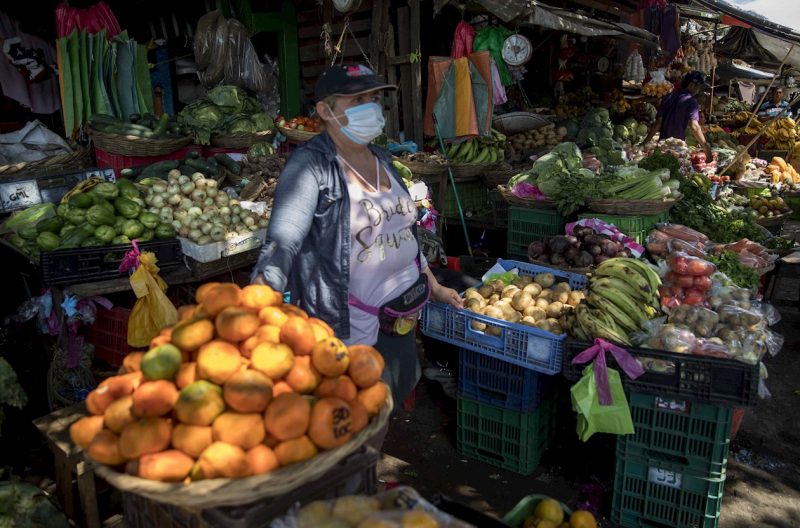“Covid-19 Could Peak in Nicaragua around the Second Week in May”

Public Health specialist projects exponential growth of the Coronavirus in mid-May. “We’re flying blind”, he says.
HAVANA TIMES – The public health specialist Dr. Carlos Hernandez maintains his projection that Nicaragua will see exponential growth in the country’s Coronavirus cases in mid-May. “We developed the latest projection when there were nine reported cases. We used that as a starting point, but the estimated growth rate was based on the average for the neighboring countries. That led us to estimate that the accelerated growth curve would begin in the second week of May. We maintain that prediction,” he added.
In the last few weeks, the percentage of fatal pneumonia cases in Nicaragua rose from 1.6% to 6%, although this is the dry season, when, historically the occurrence of these cases is lower. This effect could be related to the arrival of Covid-19 in the country, warned public health specialist Carlos Hernandez, in an interview with Confidencial and the internet news program Esta Semana, broadcast on YouTube.
“We’ve never before had fewer than 1,000 new cases of pneumonia reported for a month. For the last three years, the average had been between 2,500 and 3,500. Today, for the first time, we have under a thousand cases reported. However, the mortality rate from this disease rose to 6%. This is possibly attributable to the fact that these cases were more severe than what was previously seen, and that the test to rule out Covid-19 wasn’t administered,” Hernandez noted.
As of April 24, 2020, Nicaragua is reporting the lowest numbers of confirmed cases of Coronavirus in Central America: 11 positive cases and three deaths, giving it also the highest fatality rate (27%) with respect to the number of confirmed cases.
However, health experts agree that this data isn’t sufficient to understand the behavior of the virus, because there’s no continuity to them.
“We’re flying blind, because there are no reports of how many tests have been done, what populations have been tested, and the most important thing – which phase (of detection) we’re in. If we keep going as we have for two months, and only testing suspected cases that have severe symptoms and are linked to someone coming from outside the country, we’re in bad shape, because that phase has already passed,” the specialist stated.
No data on the tests
The Covid-19 tests are fundamental for understanding the pandemic’s behavior, because these are the only things that allow us to identify whether or not there’s community transmission. It allows the specialists to establish projections and make decisions. However, the government has kept all the information hidden.
“The fundamental variable is being able to locate positive cases of Covid-19 in the territory, because there must be some. And the places with the most reports of suspected cases is where we should have done a sweep of the area with tests. We don’t accomplish anything with the 50, 100, or 200 tests that are being reported,” Hernandez explained.
In the same vein, he stated that even though Nicaragua has the highest percentage of mortality from the pandemic, this statistic can’t be considered as a tendency, due to the small number of confirmed cases. However, these statistics give evidence of the poor handling of the cases.
“It’s worrisome that three of the eleven patients should die, because that means that either we’re detecting the cases late, or the way in which they’ve been managed isn’t adequate. I would be inclined towards the first hypothesis,” he noted.
Covid-19 in Central America
The evolution of the novel Coronavirus in Central America has been slow. The critical moment hasn’t yet arrived, and this could be explained by the early preventive measures taken by the governments and the population, although the accuracy of the numbers has also been criticized in some countries.
In Nicaragua, according to a Google mobility report, there’s been a 45% reduction in visits to commercial centers, restaurants, parks and even to the workplaces, since a number of companies have begun working remotely.
Nevertheless, Hernandez warned: “all this isn’t enough if the educational system remains open, and they continue to hold vaccination sessions where we see health workers and volunteers working with no protective measures, and the families standing in line to receive vaccines.”
The doctor, who is a member of the Multidisciplinary Scientific Committee, regrets the lack of access to the real data on the number of infections.
According to the latest report from Observatorio Ciudadano (“Citizen Observatory”) dated April 22, they’ve received 290 denunciations of suspected Coronavirus cases. The departments with the greatest number of reported infections are: Managua with 85 cases, Estelí with 27, Masaya 26, Matagalpa 24, Caribe Sur 20, Chinandega 15, Granada 14, Madriz 14, León 11 and Rivas 11.
Ministry of Health declares itself prepared
The government has said that the hospitals are prepared to handle the cases, but has offered no details about the quantity of equipment they have on hand.
The most recent data, which doctors and specialists confirmed to Confidencial, indicate that in Nicaragua there are just under 6,000 hospital beds and only 160 ventilators available for the critical cases, of which 80% are already in use with patients who have other pathologies.






Is there anything to suggest that having reached a peak, the number of infections will decline?